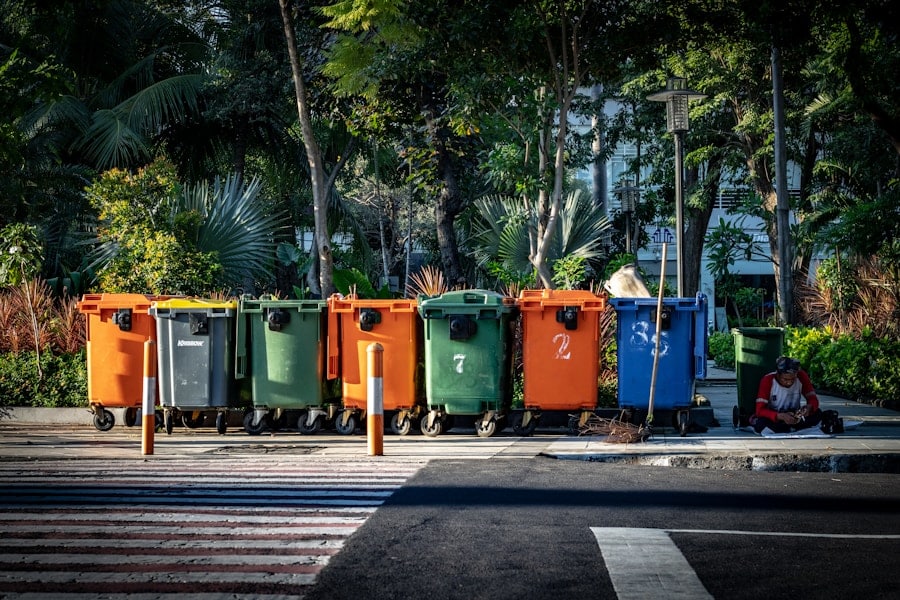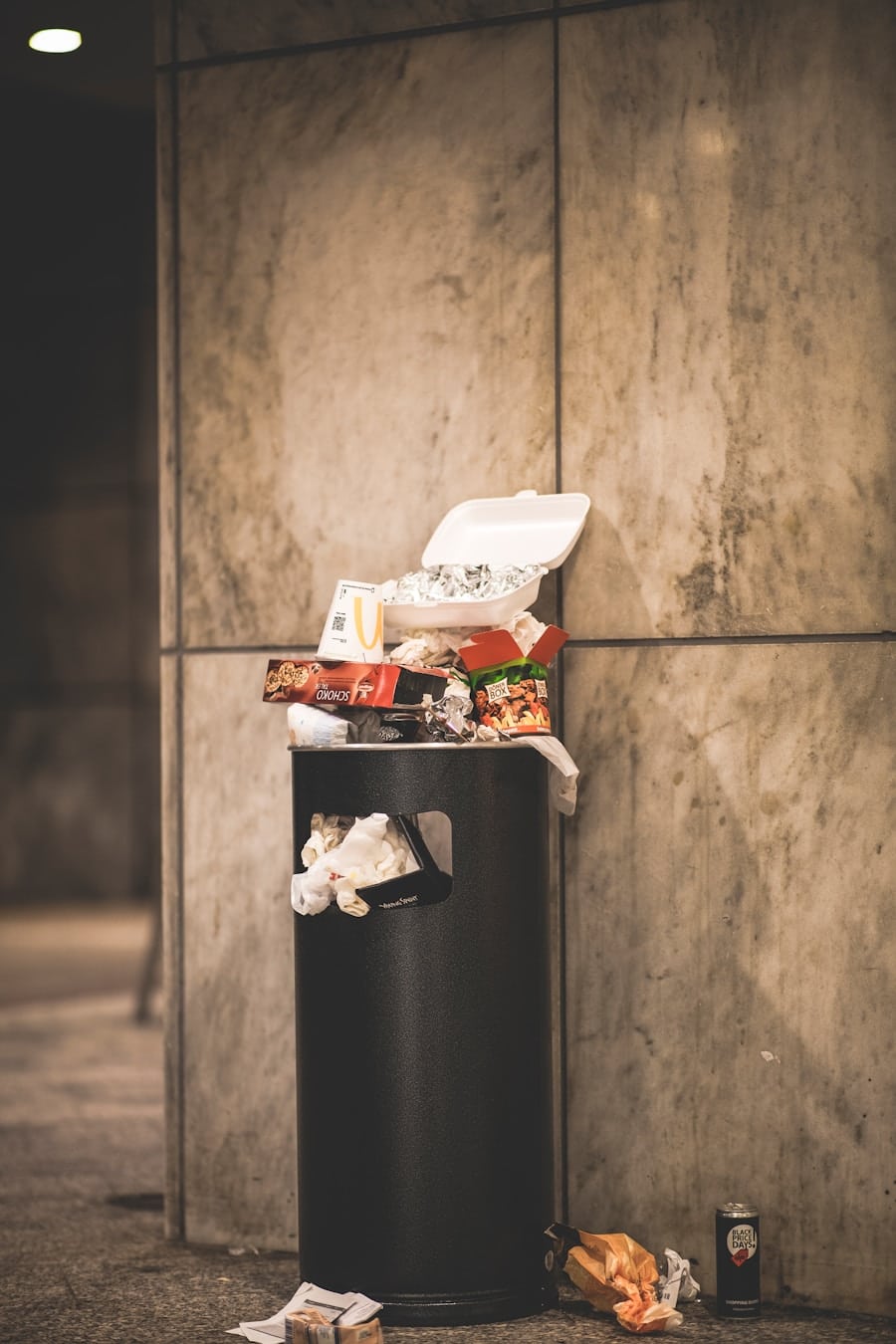In an era where environmental sustainability is paramount, the advent of smart waste sorting and recycling systems represents a significant leap forward in waste management practices. These systems leverage advanced technologies, including artificial intelligence (AI), to enhance the efficiency and effectiveness of waste sorting processes. Traditional waste management methods often fall short in addressing the complexities of modern waste streams, which are increasingly diverse and challenging to categorize.
Smart waste sorting systems aim to bridge this gap by automating the sorting process, thereby reducing human error and increasing recycling rates. The integration of technology into waste management is not merely a trend; it is a necessity driven by the growing volume of waste generated globally. According to the World Bank, global waste generation is expected to increase by 70% by 2050, reaching 3.4 billion tons annually.
This staggering figure underscores the urgent need for innovative solutions that can streamline waste processing and promote recycling. Smart waste sorting systems utilize sensors, machine learning algorithms, and robotics to identify, categorize, and process various types of waste materials efficiently. By doing so, they not only enhance recycling rates but also contribute to a circular economy where materials are reused and repurposed rather than discarded.
Key Takeaways
- Smart waste sorting and recycling systems use technology to improve the efficiency of waste management processes.
- Efficient waste sorting and recycling is important for reducing environmental impact and promoting sustainability.
- AI plays a crucial role in improving waste sorting and recycling processes by enabling automation and data analysis.
- AI technology is used in smart waste sorting systems for tasks such as object recognition, sorting, and quality control.
- Implementing AI in smart waste sorting and recycling systems offers advantages such as increased accuracy, speed, and cost-effectiveness.
The Importance of Efficient Waste Sorting and Recycling
Environmental Benefits
Properly sorted waste can significantly reduce the volume of materials sent to landfills, which are not only costly to maintain but also pose environmental hazards such as soil and water contamination. By diverting recyclable materials from landfills, communities can conserve natural resources, reduce greenhouse gas emissions, and minimize the ecological footprint associated with waste disposal.
Economic Advantages
Efficient recycling processes can lead to substantial economic benefits. The recycling industry creates jobs, stimulates local economies, and fosters innovation in material recovery technologies. For instance, the U.S. Bureau of Labor Statistics reported that the recycling industry employed over 1.1 million workers in 2018, with wages exceeding $37 billion.
Incentivizing Sustainable Waste Management
By improving waste sorting systems, municipalities can enhance their recycling rates, leading to increased revenue from the sale of recycled materials and reduced costs associated with landfill operations. This economic incentive is crucial for encouraging communities to invest in advanced waste management technologies.
The Role of AI in Improving Waste Sorting and Recycling Processes

Artificial intelligence plays a transformative role in enhancing waste sorting and recycling processes. By employing machine learning algorithms and computer vision technologies, AI systems can analyze vast amounts of data to identify and classify different types of waste materials with remarkable accuracy. This capability is particularly valuable in environments where human sorting is prone to error due to fatigue or lack of training.
AI-driven systems can continuously learn from new data inputs, improving their sorting accuracy over time and adapting to changes in waste composition. One of the most significant advantages of AI in waste management is its ability to process materials at a speed and scale that far surpasses human capabilities. For example, AI-powered robotic arms equipped with advanced sensors can sort through thousands of items per hour, identifying recyclables such as plastics, metals, and paper with precision.
This rapid processing not only increases the efficiency of recycling facilities but also reduces operational costs associated with manual labor. Furthermore, AI can optimize logistics by predicting waste generation patterns and adjusting collection routes accordingly, ensuring that resources are allocated effectively.
How AI Technology is Used in Smart Waste Sorting Systems
AI technology is utilized in smart waste sorting systems through various applications that enhance the overall efficiency of waste management operations. One prominent application is the use of computer vision systems that analyze images of waste materials in real-time. These systems employ deep learning algorithms trained on extensive datasets to recognize different types of materials based on their visual characteristics.
For instance, a smart bin equipped with a camera can identify whether an item is recyclable or not by analyzing its shape, color, and texture. Additionally, AI algorithms can be integrated into conveyor belt systems within recycling facilities. As waste moves along the conveyor belt, AI-powered cameras capture images and classify items instantaneously.
This allows for immediate removal of contaminants—such as non-recyclable plastics or hazardous materials—before they enter the recycling stream. By minimizing contamination rates, these systems enhance the quality of recycled materials, making them more valuable in the marketplace. Another innovative application involves predictive analytics powered by AI.
By analyzing historical data on waste generation patterns, AI systems can forecast future trends in waste composition and volume. This information enables municipalities and recycling facilities to optimize their operations by adjusting collection schedules and resource allocation based on anticipated demand. Such proactive measures not only improve efficiency but also contribute to more sustainable waste management practices.
Advantages of Implementing AI in Smart Waste Sorting and Recycling
The implementation of AI in smart waste sorting and recycling systems offers numerous advantages that extend across environmental, economic, and operational dimensions. One of the most significant benefits is the increased accuracy of sorting processes. Traditional manual sorting methods are often hampered by human error, leading to contamination of recyclable materials.
In contrast, AI-driven systems can achieve higher levels of precision by continuously learning from data inputs and refining their algorithms over time. Moreover, AI enhances operational efficiency by automating labor-intensive tasks that would otherwise require significant human resources. This automation not only reduces labor costs but also allows human workers to focus on more complex tasks that require critical thinking and problem-solving skills.
For example, while AI handles routine sorting operations, human workers can oversee system performance, conduct maintenance checks, or engage in community outreach efforts to promote recycling initiatives. Another advantage lies in the scalability of AI solutions. As cities grow and waste generation increases, traditional sorting methods may struggle to keep pace with demand.
AI systems can be easily scaled up or integrated into existing infrastructure without requiring extensive overhauls. This adaptability makes it feasible for municipalities of all sizes to adopt smart waste sorting technologies tailored to their specific needs.
Challenges and Limitations of AI in Waste Sorting and Recycling

Financial Barriers to Adoption
One significant challenge is the initial investment required for implementing advanced technologies. The cost of acquiring AI-powered equipment, sensors, and software can be prohibitive for smaller municipalities or organizations with limited budgets. Additionally, ongoing maintenance and updates may incur further expenses that could deter potential adopters.
Data Quality and Algorithm Training
Another limitation pertains to the quality of data used to train AI algorithms. The effectiveness of machine learning models relies heavily on access to high-quality datasets that accurately represent the diversity of materials encountered in real-world waste streams. In many cases, existing datasets may be insufficient or outdated, leading to suboptimal performance in sorting tasks. Furthermore, variations in local waste composition can complicate the training process, necessitating continuous adjustments to algorithms as new materials emerge.
Social Implications and Workforce Development
Moreover, there are concerns regarding job displacement due to automation in the waste management sector. While AI can enhance efficiency and reduce labor costs, it may also lead to job losses for workers involved in manual sorting processes. Addressing this issue requires a balanced approach that considers both technological advancement and workforce development initiatives aimed at reskilling workers for new roles within the evolving industry.
Case Studies of Successful Implementation of AI in Waste Sorting and Recycling
Several case studies illustrate the successful implementation of AI technologies in smart waste sorting and recycling systems across various regions. One notable example is the city of San Francisco, which has integrated AI-driven solutions into its recycling program as part of its Zero Waste initiative. The city employs smart bins equipped with sensors that monitor fill levels and identify recyclable materials using computer vision technology.
This data-driven approach has led to improved collection efficiency and increased recycling rates within the city. Another compelling case study comes from a partnership between a leading technology company and a major recycling facility in Europe. The facility implemented an AI-powered robotic sorting system capable of processing up to 10 tons of recyclables per hour.
By utilizing advanced machine learning algorithms, the system achieved an impressive accuracy rate of over 95% in identifying recyclable materials while minimizing contamination levels. This successful implementation not only enhanced operational efficiency but also positioned the facility as a leader in sustainable waste management practices. In Asia, a pioneering project in South Korea has demonstrated the potential for AI-driven smart bins in urban environments.
These bins are equipped with cameras that analyze incoming waste in real-time, providing immediate feedback to users about proper disposal practices through visual displays. This interactive approach has resulted in increased public awareness about recycling and has significantly improved participation rates among residents.
Future Trends and Developments in AI for Smart Waste Sorting and Recycling Systems
As technology continues to evolve rapidly, several future trends are likely to shape the landscape of AI-driven smart waste sorting and recycling systems. One prominent trend is the increasing integration of Internet of Things (IoT) devices within waste management infrastructure. IoT-enabled sensors can provide real-time data on waste generation patterns, allowing for more precise forecasting and resource allocation strategies.
Additionally, advancements in machine learning algorithms will likely enhance the capabilities of AI systems in recognizing new materials as they emerge in consumer markets. As product packaging evolves towards more sustainable options or novel materials are introduced into circulation, AI systems will need to adapt accordingly to maintain high levels of sorting accuracy. Furthermore, there is a growing emphasis on collaboration between municipalities, technology providers, and research institutions to drive innovation in smart waste management solutions.
Public-private partnerships can facilitate knowledge sharing and resource pooling, enabling communities to implement cutting-edge technologies while addressing local challenges effectively. Finally, as public awareness regarding environmental issues continues to rise, there will be an increasing demand for transparency in recycling processes. Consumers are becoming more conscious about where their recyclables go after disposal; thus, companies will need to leverage AI technologies not only for operational efficiency but also for tracking materials throughout the recycling supply chain.
In conclusion, smart waste sorting and recycling systems powered by artificial intelligence represent a promising frontier in sustainable waste management practices. By harnessing advanced technologies to improve efficiency and accuracy while addressing challenges such as contamination rates and operational costs, these systems have the potential to revolutionize how communities manage their waste streams for a more sustainable future.
In addition to exploring the role of AI in enhancing smart waste sorting and recycling systems, it is also important to consider the impact of technology on other aspects of our daily lives. For example, Wear OS by Google offers a glimpse into how wearable technology can enhance our fashion choices and daily routines. By staying up to date on the latest trends, such as those highlighted in LinkedIn’s top trends for 2023, we can continue to harness the power of technology to improve various aspects of our lives.
FAQs
What is AI?
AI, or artificial intelligence, refers to the simulation of human intelligence in machines that are programmed to think and act like humans. This includes tasks such as learning, problem-solving, and decision-making.
How does AI enhance smart waste sorting and recycling systems?
AI enhances smart waste sorting and recycling systems by using advanced algorithms to identify and sort different types of waste materials. This technology can help improve the efficiency and accuracy of waste sorting processes, leading to increased recycling rates and reduced contamination.
What are the benefits of using AI in waste sorting and recycling?
Some benefits of using AI in waste sorting and recycling include improved sorting accuracy, increased recycling rates, reduced contamination of recyclable materials, and overall efficiency in the waste management process.
What are some examples of AI technologies used in waste sorting and recycling systems?
Some examples of AI technologies used in waste sorting and recycling systems include robotic arms equipped with computer vision to identify and sort materials, machine learning algorithms to improve sorting accuracy, and data analytics to optimize waste management processes.
Are there any challenges or limitations to using AI in waste sorting and recycling?
Challenges and limitations to using AI in waste sorting and recycling systems may include the initial cost of implementing AI technology, the need for ongoing maintenance and updates, and potential issues with the accuracy of AI algorithms in certain environments. Additionally, there may be concerns about the displacement of human workers in the waste management industry.

